Growing Philodendrons
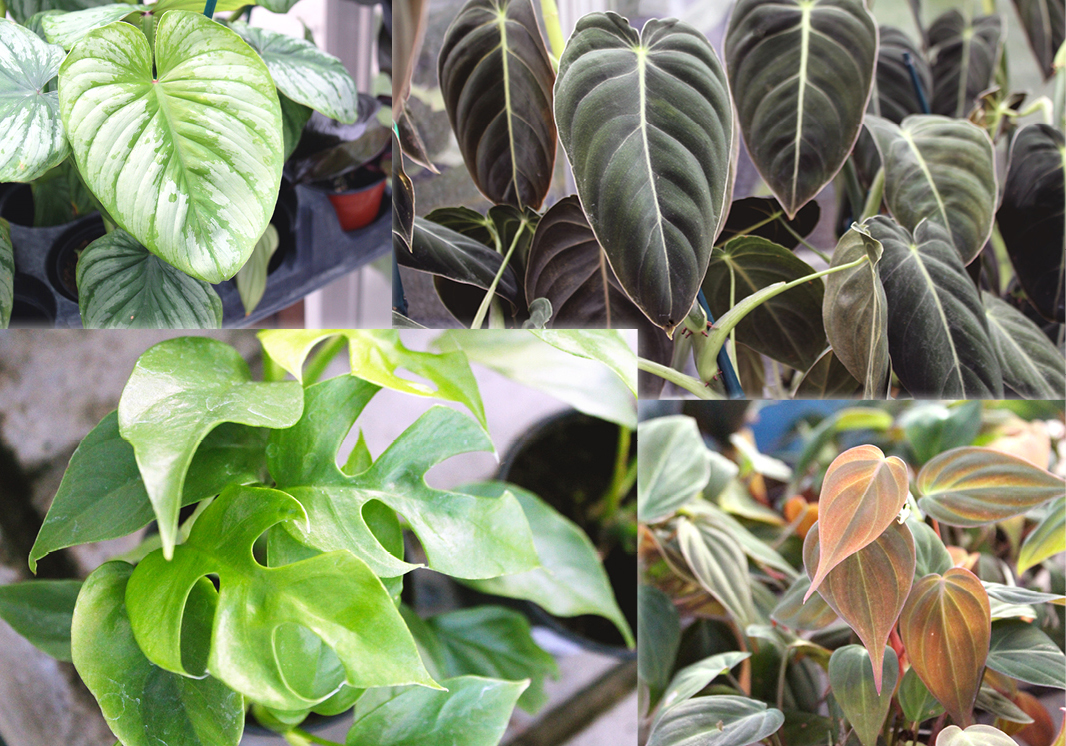
Welcome to the wonderful world of Philodendrons!
For years, humans have been fascinated by this widely varied group of plants. Philodendron leaves grow in colors of dark and neon green, red, purple, orange, variegated, split leaf varieties and the diversity doesn't stop there. Leaf shapes and plant growth habits are just as varied. They make great houseplants and are excellent air purifiers! Whether you are an experienced green thumb or a newcomer to the world of houseplants, you can grow this one with relative ease. Though there are some minor differences in the care between specific varieties, the general daily care and maintenance for these plants is very much the same.
Growing Philodendrons
In general, Philodendrons are hardy, versatile plants that will grow in a wide variety of locations in your home.
LOCATION | All plants need light to grow, but Philodendrons are not as picky as some. Any location with exposure to sunlight, low-light, medium, or bright filtered light, will work. The only locations to avoid are areas with no exposure to natural light and harsh, direct sunlight which can burn the leaves. Philodendrons are an understory plant. They originate from tropical rainforests and, in nature, grow under a canopy of tree branches. This is what you're trying to replicate at home. This environment will set you up for success and give your plant the conditions to thrive. In the absence of natural lighting, don't deprive yourself of the joy that growing Philodendrons brings. Grow lights are a great solution to growing plants in dark areas.
Shop Grow Lights
WATER | Philodendrons like an evenly moist soil and will tolerate a drying period between waterings. In fact, when grown in low-light locations, it is beneficial that you do so to prevent root rot, black spot, and other common watering-related diseases. Avoid these issues entirely and don't overwater or combat the problems once developed and allow the soil your plant is growing in to dry thoroughly between waterings. Upright varieties are a little more drought tolerant than vining varieties and can be great options for Philodendron lovers with less time for plant care.
FERTILIZER | A balanced, all-purpose or specialized houseplant fertilizer are both excellent options. Follow the fertilizer label for the best frequency of use and amount to apply. During the growing season (spring & summer), follow these instructions. During the winter, reduce feeding to half the amount and frequency recommended or stop fertilizing entirely. If your plant isn’t getting enough food, its growth will be slower than normal, and its leaves might also appear smaller or stunted.
Shop Houseplant Fertilizers
HUMIDITY | Adding moisture to the air, as well as the soil, can help prevent brown leaf tips, edges, and mimic more closely the natural growing conditions that Philodendrons thrive in when growing in the wild. Two easy ways to increase the surrounding humidity level for your houseplants are:
- Use the “Tray of Pebbles” method. Fill a tray or saucer with pebbles, fine gravel or small stones. Then fill the saucer with water and place the plant on top. The layer of gravel should raise the pot above the water level so your houseplant isn't sitting in water which will evaporate and add humidity to the surrounding area.
- Add a humidifier to the room.
Shop Gravel & Drainage Media
Shop Saucers
GROWTH | Most Philodendron varieties are fast growers compared to other houseplant varieties. How fast your plant grows is directly determined by the exact variety and how you care for it. A regular watering and fertilizing schedule paired with a bright filtered sunlight will ensure the best and fastest growth of your beloved plant. There are so many varieties to choose from that include both vining, climbing, and upright varieties. Though most Philodendron are grown primarily for their glossy, tropical leaves, there are some plants that will bloom under the right conditions. These blooms can be trimmed off at any time or left and enjoyed if so desired.
Troubleshooting
This genus of plants are not particularly pests or disease-prone. If you experience the occasional bout of pests or disease, there are easy ways to combat the issues.
Neem Oil is both naturally derived and a dual-purpose insecticide & fungicide that can be used on almost any houseplant. A thorough application on any part of the plant (don't forget the underside of leaves where many pests like to hide) is a great way to combat aphids, spider mites, powdery mildew, and the majority of common houseplant afflictions.
Shop Neem Oil
Horticultural Oil or Rubbing Alcohol are both great options to use on hard-to-kill infestations like mealybug and other types of scale-like insect pests.
Shop Horticultural Oil
Of course, the best defense is to avoid problems before they even start. After all, “an ounce of prevention is worth a pound of cure”. A healthy plant has natural defense systems that, when up and running, can prevent these common pests and diseases from presenting. So, do your best to care for the plant and it will reward you with thriving foliage.
Types of Philodendrons
(there are many more than we have listed, but here are some popular varieties that we think you'll enjoy)

Philodendron cordatum
An extremely popular climbing/vining plant easily identified by its heart-shaped leaves that are most commonly green, but variegated varieties can also be found.
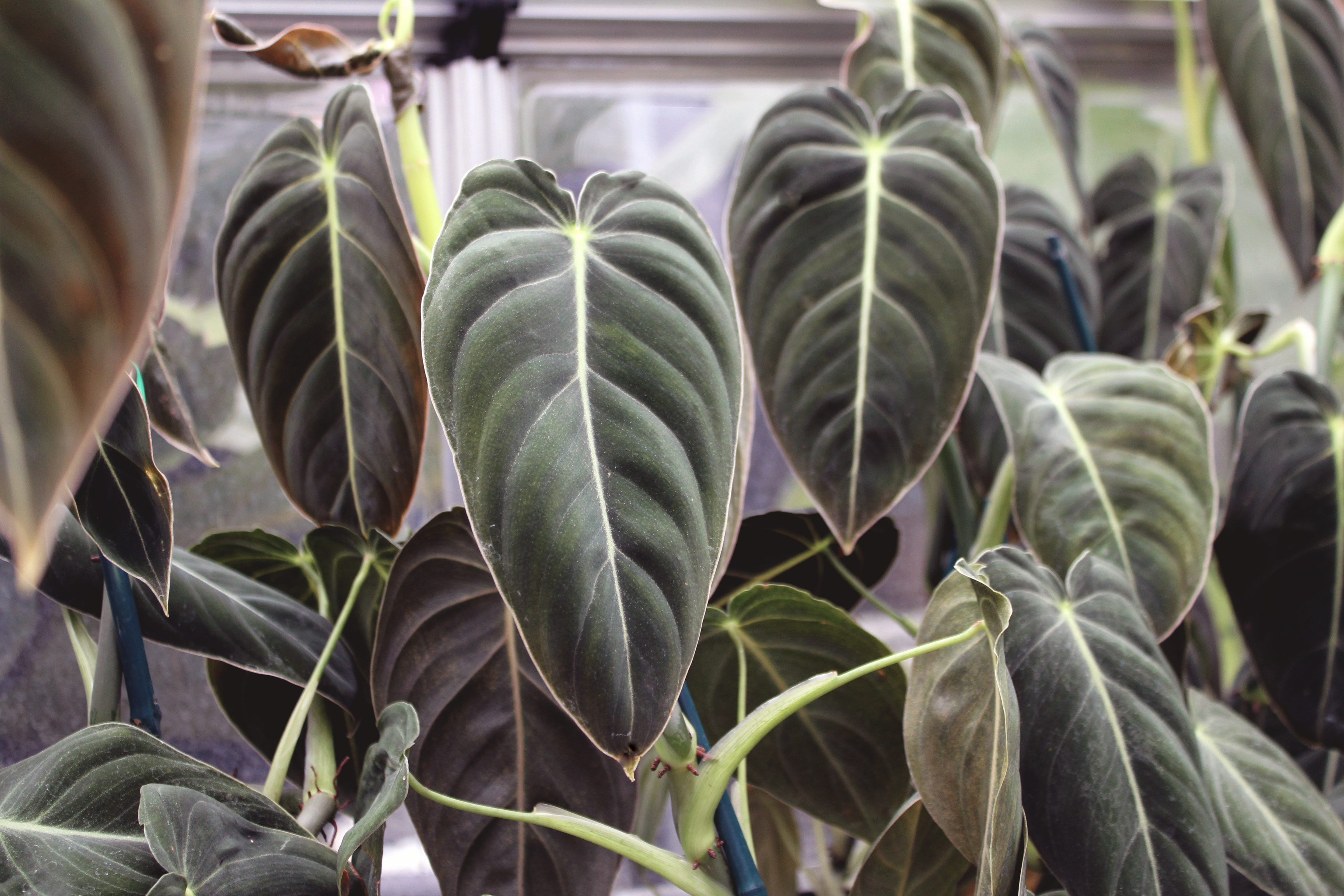
Philodendron melanochrysum
A climber with stunning, dark, velvety leaves powdered in a tinge of bronze.
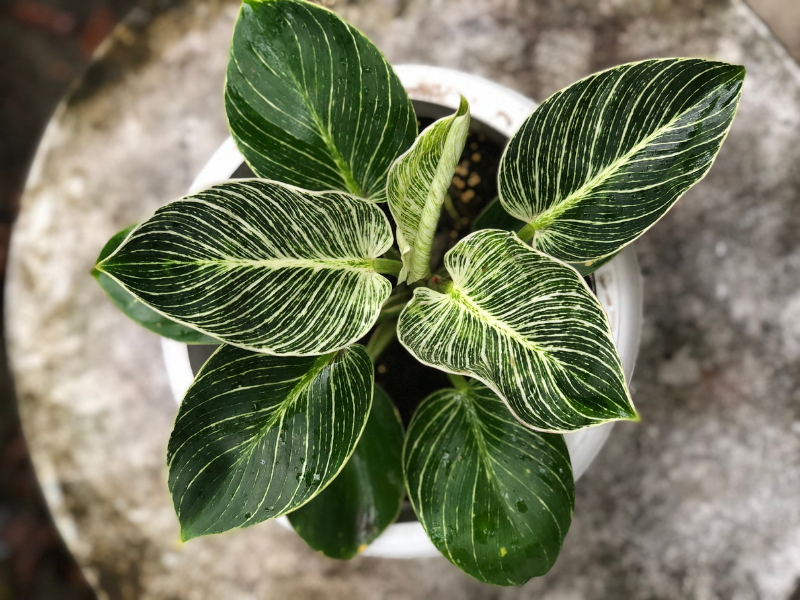
Philodendron 'Birkin'
An upright plant characterized by striking, thin white stripes on its green leaves.
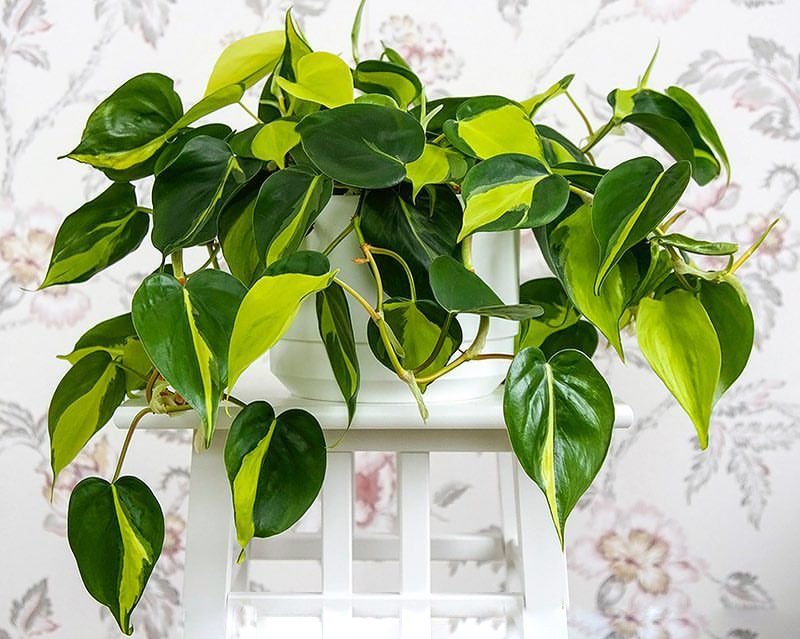
Philodendron hederaceum ‘Brasil’
As a cultivar of the Philo. cordatum heart-leaf Philodendron, this species features the same signature heart-shaped leaves with an added lime green variegation.
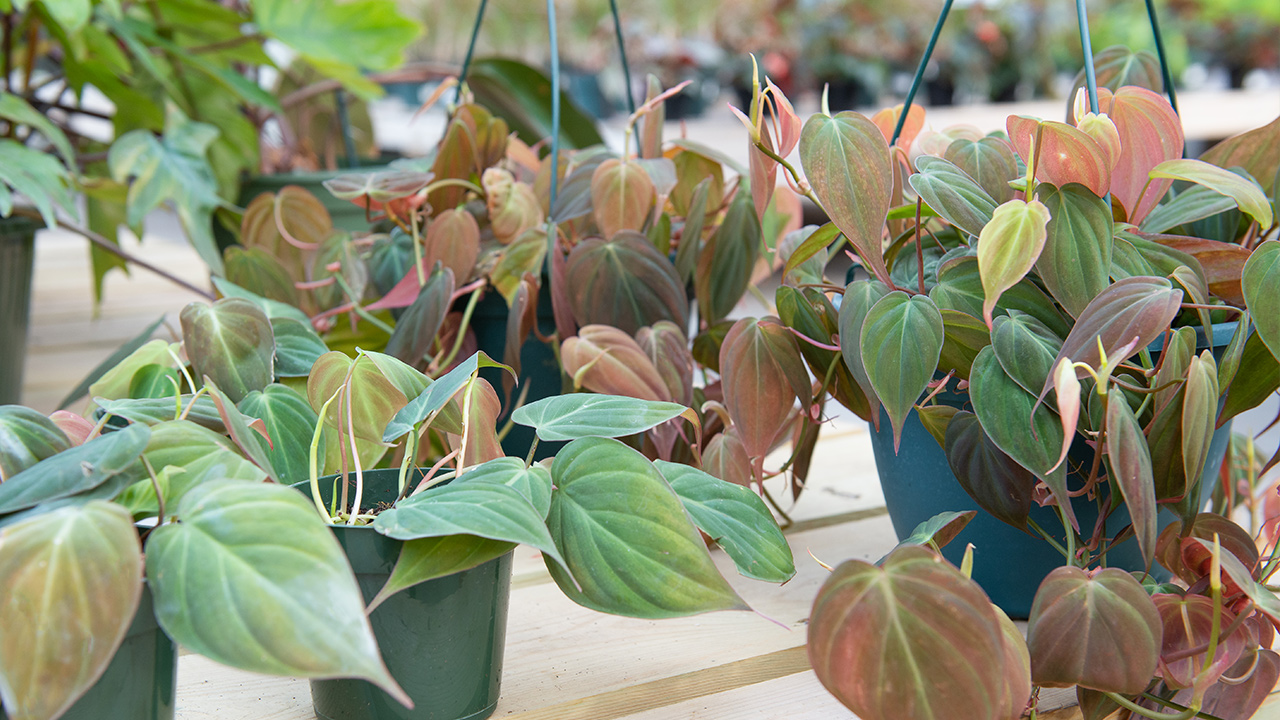
Philodendron micans
A vining, bicolored chameleon. This cultivar's leaves begin their lives arrayed in bronze and mature into a dark green.
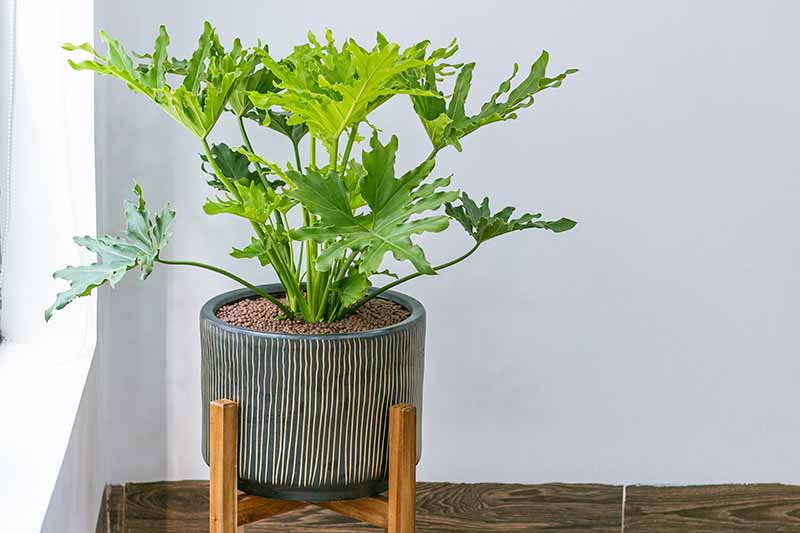
Philodendron selloum
Bright green foliage distinctive for its frilly, deeply lobed leaves with a finger-like appearance. This large variety can reach more than 5-feet wide!
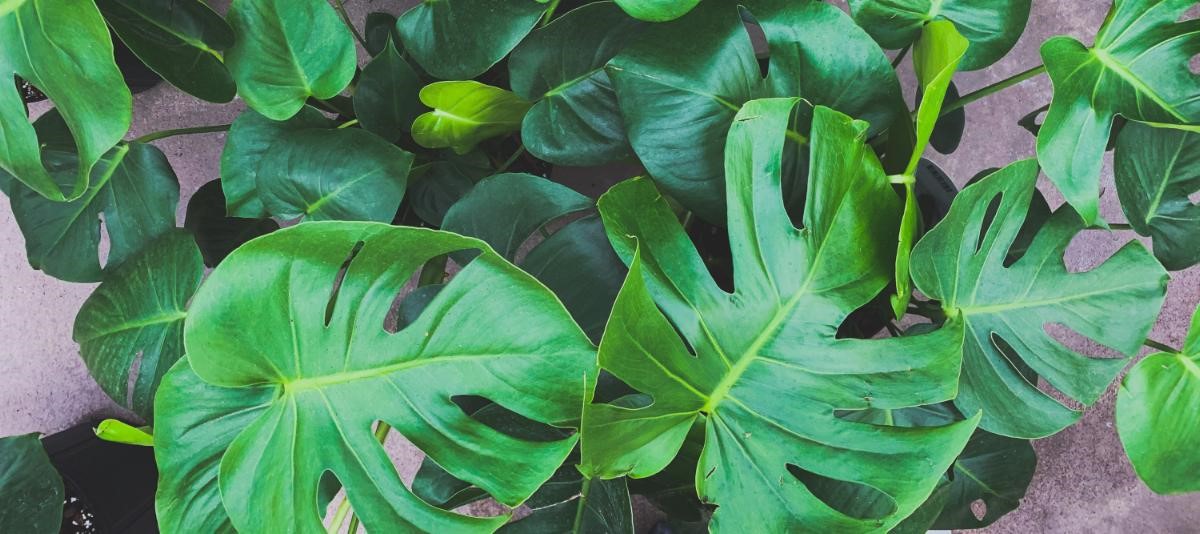
Monstera deliciosa
Is, simply, the quintessential split leaf plant with gigantic ovate leaves that fenestrate (fancy word for split) with maturity. For more fenestration, grow in a bright light. Plants grown in a dark corner tend to grow solid leaves that are less likely to split .
Follow the instructions above and watch your Philodendrons grow beautifully. Need more details about your Philodendron or another houseplant species? Visit us in-person or contact us in any way that's most convenient for you. The friendly staff at our 3 stores are eager and ready to help make your indoor garden flourish.
Please note: according to the ASPCA, Philodendrons are toxic and should not be ingested by humans or pets (both dogs & cats). Learn more about Philodendrons and other pet-toxic plants on the ASPCA website: https://www.aspca.org/search/node?search=philodendron
